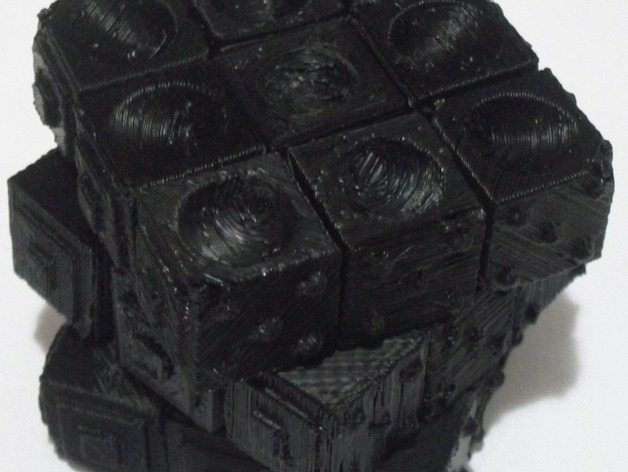
Rubik's Cube Tiles For The Blind (Lesson plan inside)
thingiverse
Hello Thingiverse! I've taken the widely popular "Rubik's Cube for the Blind" and adapted it to fit perfectly on top of a classic Rubik's Cube. The tiles can be attached using hot glue or super glue, opening up new possibilities for individuals with impaired vision. This design requires no special parts or background information, making it easy to assemble and use. I thought a fully printable version was cool, but for those with budget-friendly printers or limited DIY experience, this simplified model is perfect. If you need help solving the puzzle, there are plenty of tutorials on YouTube, such as this interactive tutorial, or try using this step-by-step guide on the Rubik's website. Learning to solve a Rubik's Cube can improve problem-solving skills, motor control, and memory, not to mention sharpen critical thinking. Of course, it's not just for blind people - try solving it yourself with a blindfold and see how long you last! Enjoy! Standards NGSS Overview and Background I've been fascinated by Rubik's Cubes for two years now, and I'm still amazed by the various methods and tricks involved in solving them. Learning to solve one has taught me valuable lessons about geometry, math, and logical thinking. In my spare time, I used to spend hours writing out algorithms for different types of puzzles. I'm thrilled to share this learning tool with everyone and make it accessible to those with visual impairments. Lesson Plan and Activity To begin, explain to your students that solving a Rubik's Cube takes time and patience, but anyone can learn. Encourage them by highlighting the ease of learning and the importance of memory. As you guide them through the lesson, be sure to carefully read step one and offer assistance when needed. The first step is often the most challenging, as they're unfamiliar with the process. Try to explain the layers and turning moves clearly. Once they've mastered that, the next hurdle will be the edges, which require a combination of letters and movement of the layers. Make sure to thoroughly review notation before proceeding. The top layer is relatively easy, but orienting the last layer can be tricky, involving two complex algorithms that are simple to learn with repetition. When they finish, be sure to congratulate them and have them try it again. Materials Needed To get started, you'll need a Rubik's Cube for each student (or consider partnering up). Classic Rubik's Cubes can be pricey at $15 each, but there are affordable alternatives on Amazon, such as the Shengshou cube, which costs under $5 including shipping. You'll also need a printed or digital copy of the tutorial. Skills Learned Critical thinking Logical thinking Problem-solving Geometry Patience Memory Duration of Lesson The lesson should take around two hours to complete, but it may take longer for some students - up to three hours. References If you have any questions about this lesson plan or anything related to Rubik's Cubes, feel free to email me at garrisonian24@gmail.com.
With this file you will be able to print Rubik's Cube Tiles For The Blind (Lesson plan inside) with your 3D printer. Click on the button and save the file on your computer to work, edit or customize your design. You can also find more 3D designs for printers on Rubik's Cube Tiles For The Blind (Lesson plan inside).
